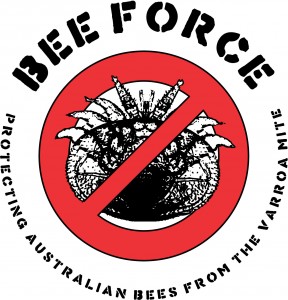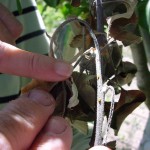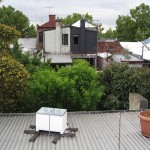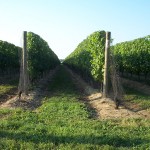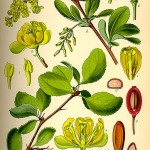Navigation
-
Recent Posts
February 11, 2014
When Rouen decided to get rid of the barberry bushes….
December 15, 2013
Archive of Posts
Below are some examples of successful projects.
BeeForce
- Varroa mites are the most obvious threat to Australia’s bee and honey industries. Once established, they cannot be eradicated.
- Both feral and managed honeybee population will be badly impacted which will cause a rapid increase in demand for pollination services.
- Could urban hobby beekeepers assist in early detection of Varroa mites and complement the current surveillance programs already operating around the country?
BACKGROUND
“Varroa mites have caused havoc worldwide. Their introduction has decimated honey bee populations everywhere they have become established. They introduce a wide range of viral diseases that weaken bee stocks, producing deformed bees and eventually reducing colony fitness and numbers. Most feral European honey bee colonies have been decimated by the introduction of Varroa in the US and Europe.
Australia is currently the only Varroa-free country.
Unfortunately, Varroa mites are now present in both New Zealand and Papua New Guinea, a few steps away from the Australian foreshores, and it is only a matter of time before they find their way to the continent. Governmental agencies have established that this pest is most likely to be introduced to Australia via cargo shipment to major ports around Australia.
The major issue with Varroa is that it can be controlled using acaricide treatments to keep numbers down, but it cannot be eradicated. Once an apiary is infested, rigorous and on-going chemical control programs need to be applied just to keep the colonies alive. To add to the difficulty, over the last decade, overseas populations of Varroa mites have developed a resistance to the most commonly used acaricides.
FINDINGS
This project successfully enrolled and trained urban hobby beekeepers in a post-border surveillance program for the early detection of Varroa mites around high-risk entry points in two locations in Victoria. BeeForce identified how community detective networks, or BeeForce task groups, could be recruited, structured and motivated to assist in monitoring for a high priority honey bee pest over a two-year initiative in both Melbourne and Geelong. This project compared two models which arose in Melbourne and Geelong and the BeeForce participants’ drivers and inspirations in both locations. BeeForce has since been deployed nationally.
FURTHER READING
Local Times Melbourne, The Weekly review
Follow BeeForce on LinkedIn
PaDIL (Pest and Disease Image Library) and FieldPaDIL
KEY POINTS
- Biosecurity starts in the field and many pests can be difficult for extension staff and producers to detect on site.
- PaDIL provides high-quality colour diagnostic images and information on pests and disease, but there is currently no section pertaining to symptoms and pest identification in the field.
- Guidelines need to be developed to ensure material captured in the field and compiled for FieldPaDIL is high quality and consistent.
BACKGROUND
BSASP Pty Ltd developed of a framework and examples to populate a FieldPaDIL database (Field Pest and Disease Image Library, Museum Victoria).
A virtual image library (PaDIL) was established in 2003 to support plant Biosecurity diagnostics through high-resolution images of a range of pests and diseases that pose a potential threat to plant health in Australia and which are of Biosecurity concern.
International obligations require that pests of concern are defined when developing phytosanitary measures to facilitate the movement of goods. However, the majority of pests encountered are not local, therefore diagnosticians require a world-wide knowledge of exotics and their associated risk.
PaDIL was developed as a free website providing high-definition and colour diagnostic images linked to basic information on plant pests (taxonomy, distribution, hosts and diagnostics testing). It houses images of morphologic diagnostic features of high-impact organisms. The primary target audience is plant Biosecurity diagnosticians with some level of experience, specialists and also non-technical users. Currently, PaDIL provides information on over 2400 plant pests, including weeds, plant pathogens and invertebrates.
FINDINGS
FieldPaDIL developed a platform for detection and identification imagery of pests and diseases in the field along with their associated symptoms and signs of damage. Several documents were developed for PaDIL including:
- high-level diagnostic guidelines,
- development of keys for identification of arthropod pests,
- processes to migrate and integrate fruit fly datasheets,
- guidelines for the identification of specific pests (e.g. red headed pasture cockchafer and Potato Cyst Nematode PCN),
- design field image capture program to test parameters,
- program of work instructions for the capture of field images and instructions for sampling in the field,
- identification of specimens and photographic guidelines.
FURTHER READING
ACERA Melbourne University:
Detectability of arthropods in consignment of fresh produce: development of a methodology for determining detection probability and the relationship between prevalence and detection probability.
KEY POINTS
- Current Australia’s import policies state that there is a 95% confidence that less than 0.5% of units in a consignment harbour quarantine pests if no pests are detected during a 600-unit sample.
- This implicitly assumes that inspectors detect 100% of the pests infesting a 600-unit sample.
- This study tests an experimental design intended to estimate the likelihood of detection of a variety of pests within a 600-unit sample at various infestation levels.
BACKGROUND
Phytosanitary inspections are one of the most important measures worldwide to prevent the introduction of exotic and regulated plant and animal pests. The International Plant Protection Convention (IPPC) sets the standards and guidelines for trade under the WTO and requires that phytosanitary measures are technically justified. The current standard inspection regime in Australia for large consignments of fresh produce is the inspection of a random sample of 600 units. The sample size is based on the statistical relationship that if all of 600 inspections fail to detect infestation then the estimated level of infestation is below 0.5% of units with 95% confidence. However, this prescription ignores imperfect detectability. Cryptic pests are more difficult to detect than others.
The aim of the project was to acquire the information necessary to design a comprehensive detectability experiment and determine the population levels at which a range of arthropods are detected reliably in fresh produce.
FINDINGS
This project provided technical data to underpin experimental assessment of the robustness of the sampling protocol of one of the mostly commonly used phytosanitary tools and a framework used in decision making about strategic investment in phytosanitary measures and inspection systems.
FURTHER READING
CABI:  Pest reviews for CABI’s Invasive Species Compendium (ISC)
Pest reviews for CABI’s Invasive Species Compendium (ISC)
BACKGROUND
CABI (Centre for Agriculture and Biosciences International) provides comprehensive information on a range of endemic and exotic organisms and PRAs (Pest Risk Analysis). It is a non-profit, international, intergovernmental organisation applying scientific expertise to solve problems in agriculture and the environment.
CABI’s Invasive Species Compendium (ISC) provides a detailed coverage of invasive species threatening livelihoods and the environment worldwide. It covers over 20,000 organisms (weeds, pathogens and pests) and hosts 3,400 detailed pest datasheets. The ISC has a global focus on the best available science on the invasive species that have the worst impacts in the world. The compendium covers all taxa in both natural and managed eco-systems. Detailed datasheets comprise fully referenced sections on taxonomy and nomenclature, distribution, habitat, identification, biology and ecology, species associations, pathways for introduction, impacts and management, complemented by images and maps, and are supported by abstracts and full text articles.
BSASP developed series of species datasheets using the ISC crop and environmental pest template using peer reviewed published data and provided a set of high resolution digital images.
FURTHER READING
Plant Biosecurity Program:  Development of on-line teaching material
Development of on-line teaching material
Through DEST funding, with support of the CRC National Plant Biosecurity and participating universities (Charles Darwin University, LaTrobe University, Murdoch University, the Queensland University of Technology and the University of Adelaide) a post-graduate curriculum in plant Biosecurity was developed. This program has been developed to offer internationally recognised skills and knowledge of Plant Biosecurity to students worldwide. The Graduate Certificate, Graduate Diploma and Masters are offered using flexible, on-line learning technology in a secure virtual forum.
The 9 units in the Plant Biosecurity program include:
- Biosecurity Plant Pests – Invertebrates
- Biosecurity Plant Pests – Pathogens
- Biosecurity Plant Pests – Weeds
- Detection and Diagnostics
- Plant Biosecurity in Practice
- Invasion Biology: Ecological foundations of Biosecurity
- Risk Assessment
- Community Engagement and Participation
- Policy Framework Obligations
BSASP was involved in the development and review of several of these units and the development of advertising material using online communication tools (Articulate Engage).

